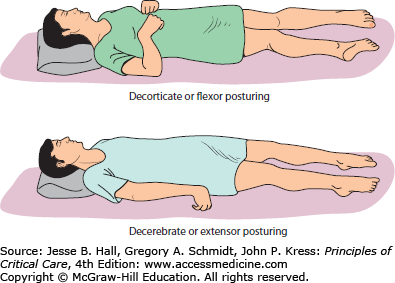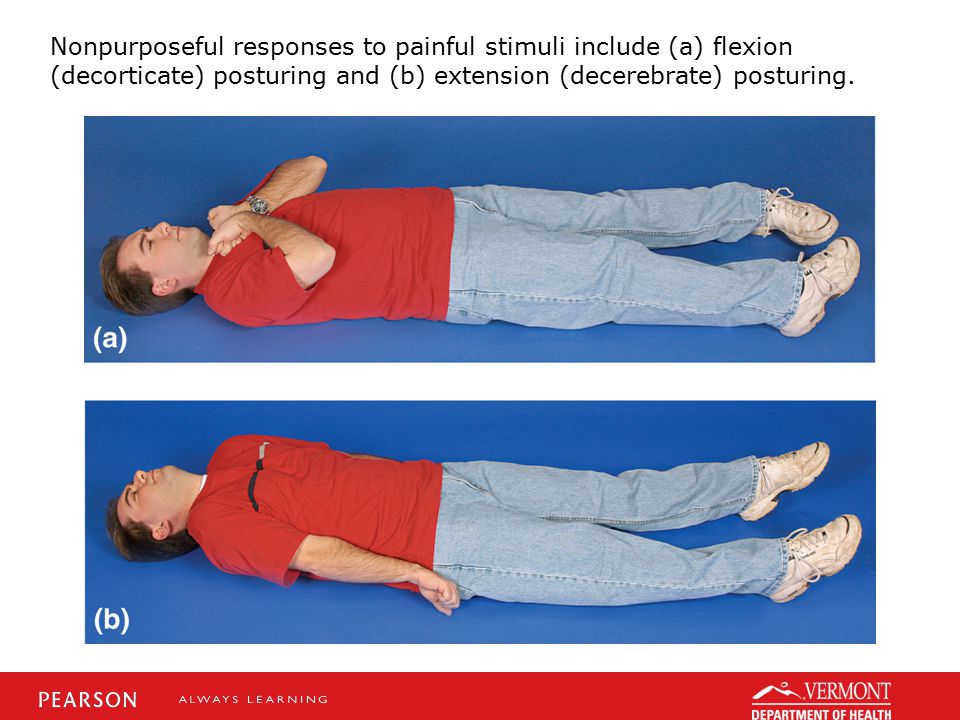Decorticate Posturing Brain Death
People who have decorticate rigidity should get medical attention right away.
Decorticate posturing brain death. Decorticate posturing a sign of severe damage to the brain is a specific type of involuntary abnormal posturing of a person. Abnormal posturing is an involuntary flexion or extension of the arms and legs indicating severe brain injury. No seizures decerebrate or decorticate posturing or dyskinetic movements.
Since posturing is an important indicator of the amount of damage that has occurred to the brain it is used by medical professionals to measure the severity of a coma. No spontaneous movement and no movement in response to painful stimuli movement due to spinal reflexes are acceptable. Decorticate posture is stiff with legs held out straight fists.
Decerebrate like posturing with mechanical ventilation in brain death. Criteria for establishing brain death bd require absence of all brainstem mediated reflexes including motor ie decerebrate or decorticate posturing. A number of spinal cord automatisms may emerge after bd but occurrence of decerebrate like spinal reflexes may be particularly problematic.
A number of spinal cord automatisms may emerge after bd but occurrence of decerebrate like spinal reflexes may be particularly. Death diagnosing brain death patient must have a reason for brain death to classify it as irreversible i e. Criteria for establishing brain death bd require absence of all brainstem mediated reflexes including motor ie decerebrate or decorticate posturing.
Decorticate posturing is a sign of damage to the nerve pathway between the brain and spinal cord. Criteria for establishing brain death bd require absence of all brainstem mediated reflexes including motor ie decerebrate or decorticate posturing. Criteria for establishing brain death bd require absence of all brainstem mediated reflexes including motor ie decerebrate or decorticate posturing.
Confusion of such stereotypic extension pronation movements with brain stem reflexes may confound or delay definitive diagnosis of bd. The posturing may also occur without a stimulus. Confusion of such stereotypic extension pronation.









